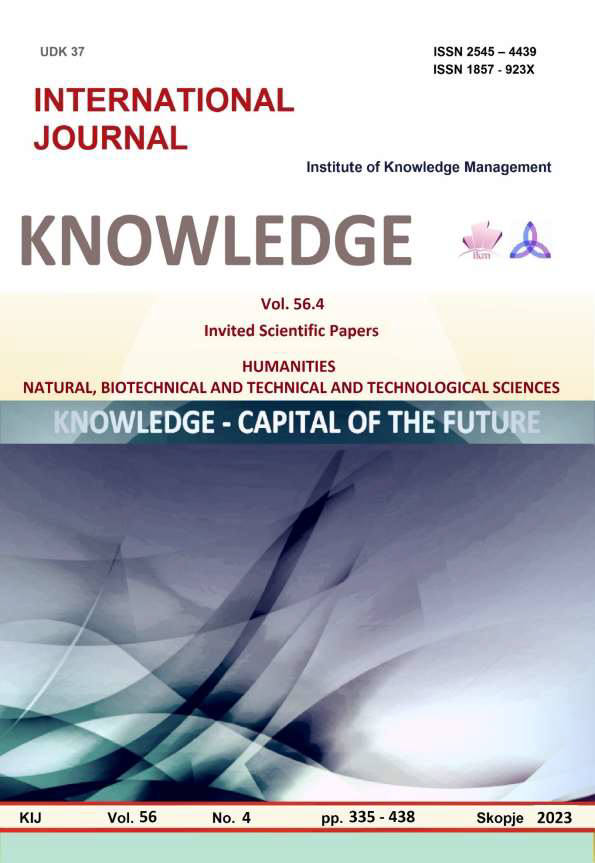THE TREATMENT OF DIRECT AND INDIRECT OPPOSITION (ACCUSATIVE OBJECT) WITHOUT PREPOSITIONS WITH STUDENTS OF THE LOWER CYCLE
Keywords:
syntax, object, the direct object and the indirect object without preposition studentAbstract
Since, the direct object and the indirect object without preposition are second limbs of the sentence,
therefore as such these in the Albanian language belong to the field of syntax. Through this thesis topic entitled "The
direct object and the indirect object without preposition", as well as research on it, we tried to present the problem,
which we encountered throughout my experience as a student and later as an intern student during practical work
with primary school students. Among other things, we have noticed that the field of syntax, more specifically the
knowledge about the direct object and the indirect object without prepositionare not "fed" enough in the minds of
students and this ignorance of students' mental chemistry can normally bring a dissatisfied result and disturbing for
linguists, teachers, students and the Albanian language itself. We have decided to research this issue, selecting as
object of research the three schools that are considered the best schools in the municipality of Gjakova. From these
three schools we have selected three classes, which we have physically distributed the prepared questionnaire of
twelve questions, related to the topic about thedirect object and the indirect object without preposition. The
questionnaire was answered by fifth grade elementary students. Findings from this research, related to the above
topic, confirm the hypotheses presented, where the results obtained from the questionnaire are factual, which clearly
show that students have processed knowledge about objects more mechanically than logically. According to these
findings we can affirm a conclusion, which reflects the real situation, which has come as a result of inadequate
teacher planning, where more attention is paid to the formal attendance of the curriculum, leaving aside the
construction of students' knowledge.
References
Avdiko, A., & Shuraja, F. (2022). Gjuha Shqipe 5: Përgatitemi për provimin e vlerësimit të njohurive të arsimit fillor, . Tirana: Redona.
Bahri B. (2007). Gjuha shqipe 5. Pejë: Dukagjini.
Beci, B. (2016.). Gjuha shqipe 4. Pejë: Dukagjini.
Çeliku, M. (2016). Tekst ushtrimesh të sintaksës së shqipes standarde. Tiranë: ILAR.
Çeliku, M., Domi, M., Floqi, S., Mansaku, S., & Përnaska, R. (2002). Gramatika e gjuhës shqipe. Tiranë.
Çeliku, M., Domi, M., Floqi, S., Mansaku, S., & Përnaska, R. etj. (2002). Gramatika e gjuhës shqipe. Tiranë.
Çeliku, M. (2012). Sintaksë e gjuhës shqipe. Tiranë.
Demiri, E. (2020, Maj 11). Gjuhe shqipe 5. Kundrinori i drejte. Gjetur në https://www.youtube.com/watch?v=a8MSTq4I7jc&t=105s&ab_channel=EmiljanaDemiri
Ministria e Arsmit, S. d. (2020, tetor 11). Gjuhë shqipe 7 - Kundrinorët. Gjetur në https://www.youtube.com/watch?v=gaiJQ3ONT4M&ab_channel=MinistriaeArsimit%2CSportitdheRinis%C3%AB
Shkurtaj, G., & Hysa, E. (2022). Gjuha shqipe per te huajt dhe shqiptaret jashte Atdheut,. Tirana: Toena.
Thomai, J., Samara, M., Haxhillazi, P., Shehu, H., Feka, Th., Memisha, V., & Goga, A. (2006). Fjalor i gjuhës shqipe. Tiranë.
Xhevat, S.. (2006). Leximi 4, Libri shkollor,. Prishtinë.
Xhevat, S.. (2018). Leximi 5, Libri shkollor. Prishtinë.





